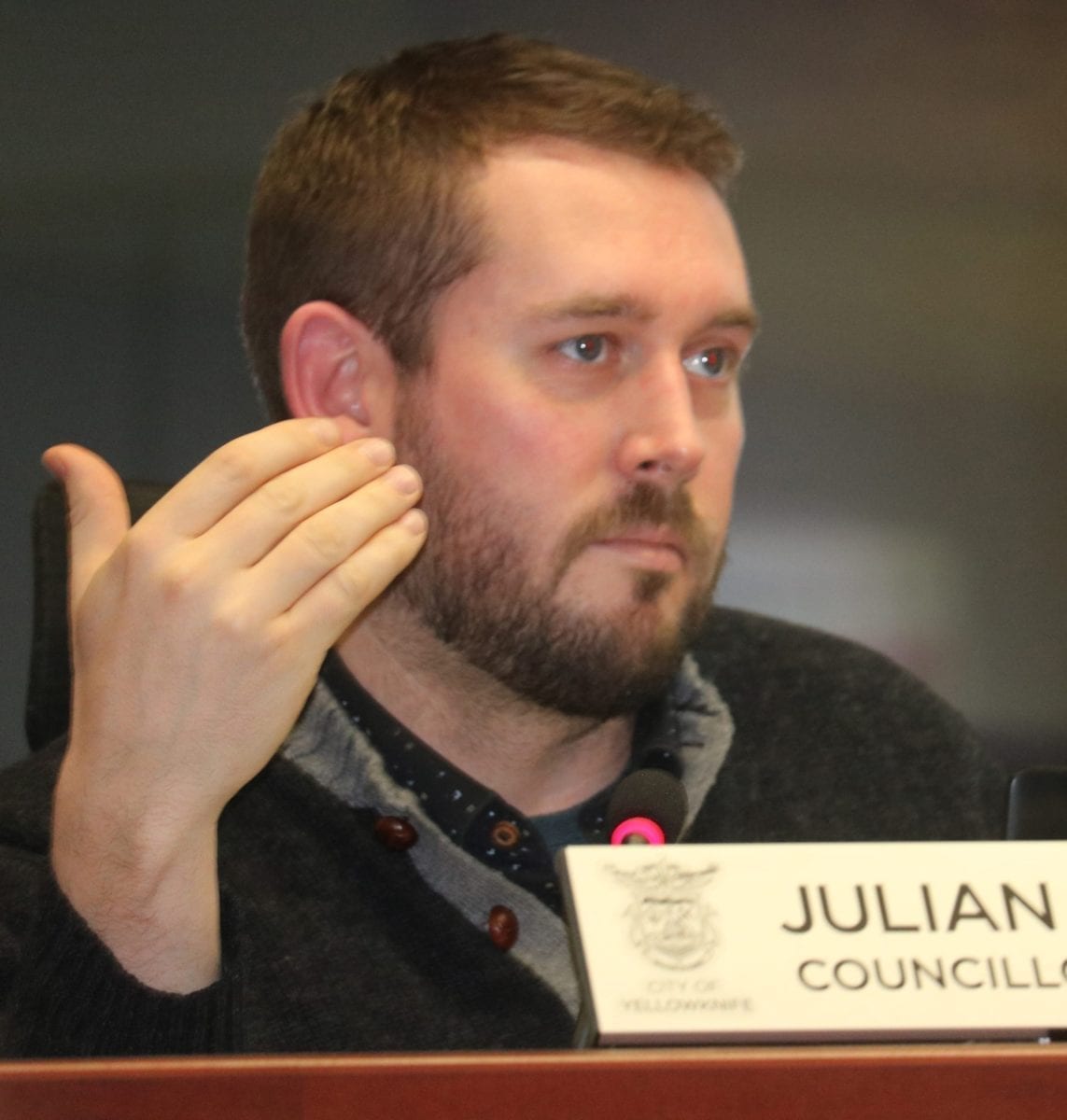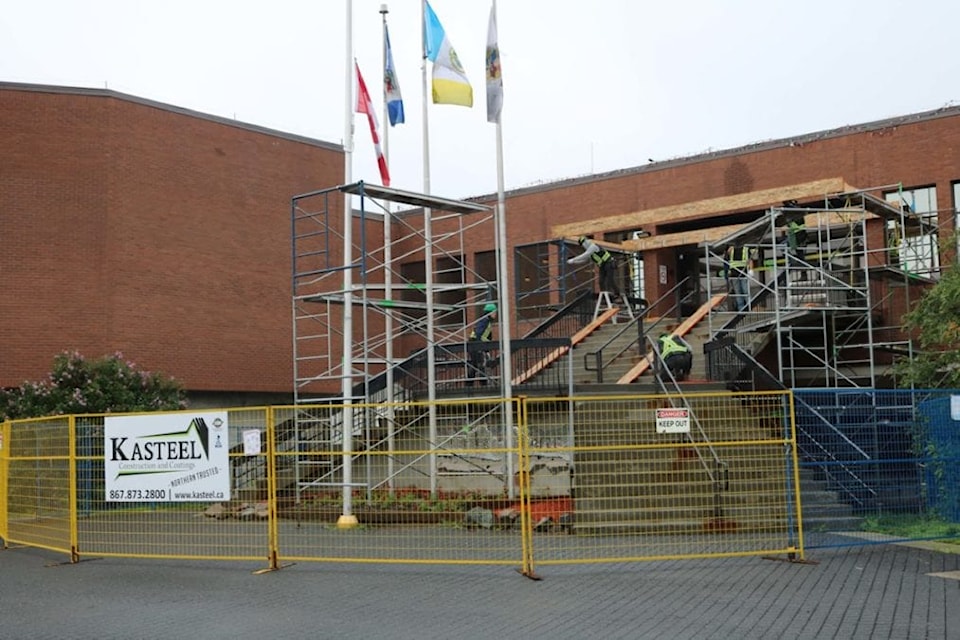At least one councillor is calling for more aggressive and focused targets to the City of Yellowknife's climate goals after council received an update on progress regarding its corporate and community energy action plan on Monday.
Coun. Julian Morse called for a "revamp" of the city's plan, with a more focused, clearer goal of the city having "all buildings in the community off carbon" by 2030.

NNSL file photo
"I think that we could do it. I think it would be an amazing achievement for the city," Morse said. "I think by setting such a simple goal, we then go to the territorial government or federal government and we say we've got this goal, we'd love to see the territorial government establish similar kinds of goals for the territory."
Morse said the last time an assessment was done on the city's greenhouse gas emissions was in 2015 and, at that time, 70 per cent of the community's emissions were noted as having come from building energy use.
"That set off a massive lightbulb in my head and that was just that the vast majority of greenhouse gas emissions are coming from us burning heating oil in our buildings," Morse said. "We could just set that one goal – one goal – just to say that buildings in this city will be carbon neutral by 2030. And that could be the entire plan. We could set the entire community energy plan towards the goal of just working on buildings in the community, both corporate and community. And we could potentially achieve as high as a 70 per cent reduction. That would be enormous to achieve that."
Five years into the city's 10-year Corporate and Community Energy Action Plan, the municipality is targetting a 50 per cent reduction of greenhouse emissions at all city facilities by 2025, using 2009 emission figures as a baseline. The city is also aiming to increase the share of renewable energy it uses to 70 per cent, from 50 per cent, by 2025. As well, it's striving to keep annual energy costs below the average of the preceding five years.
Community targets
The city is also aiming to reduce greenhouse gas emissions for the broader community. The goal is to slash city-wide emissions by 30 per cent by 2025 and increase in the share of renewable energy use to 30 per cent, from 18 per cent, also by 2025.
Morse called for any new infrastructure developments that the city undertakes to encompass the city's carbon neutral plans. The municipality has been concentrating on biomass installations, district energy efforts between buildings, local improvement charges to residents to retrofit homes and promoting the use of waste to energy products like wood chips and solar to curb carbon emissions.
"It is an opportunity for us and it can be done," said Morse. "The exciting thing is that we're talking about existing technology. We don't need Elon Musk to invent anything here. We can create buildings that are carbon neutral now."
Aquatic Centre
Coun. Niels Konge pointed specifically to the coming aquatic centre – the city's largest planned capital project.
"If we're serious about building a facility that is energy efficient we should be telling administration and our consultants that we will accept nothing other than a building between the Fieldhouse and the Multiplex," he said, estimating that the costs of the building would decrease by 50 per cent because of shared exterior walls and lesser exposure. "When you look at a lifespan of 50 years of a building that size, it will have measurable benefits."
Coun. Shauna Morgan jumped on this point too, asking if energy efficiency is a factor going into the choice of location. She added that it is going to be increasingly important for district energy systems and shared locations when considering new buildings.
Community services director Grant White and senior administrative officer Sheila Bassi-Kellett said there were three main studies that went into site selection for the pool: environmental site assessment, a geotechnical study and a transportation study. All were approved in the pre-design plan but don't include energy efficiency as a factor, according to White and Bassi-Kellett.
Fact file
City of Yellowknife's five key climate actions for the next five years
City building targets
- 50 per cent reduction of GHG emissions by 2025 using the 2009 baseline.
- Increase the share of renewable energy 70 per cent, from 50 per cent, by 2025
- Keep annual energy costs below the average of the preceding five years
Community energy targets
- 30 per cent reduction in greenhouse gas emissions by 2025
- Increase the share of renewable energy use to 30 per cent, from 18 per cent, by 2025
